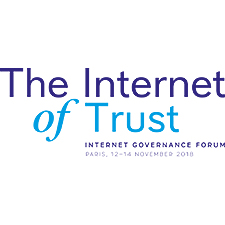Community connectivity: When the unconnected build connectivity
12 Nov 2018 11:15h - 12:15h
Event report
[Read more session reports and live updates from the 13th Internet Governance Forum]
The session focused on the partners’ contributions to the Community Network Manual: How to build the Internet Yourself. The goal of the Community Network Manual is to describe how community networks (CNs) can be built, organised and deployed, thus presenting toolkits, guidelines and instructions to be used by all interested stakeholders for the concrete construction of such networks.
The session was organised by Mr Luca Belli, FGV, and Mr Nicolas Echániz, Altermundi. Belli, the moderator, opened the annual meeting of the Dynamic Coalition on Community Connectivity (DC3) explaining that the coalition’s goal, since its creation in 2015, has been to create synergies and identify common causes to increase Internet connectivity. The panellists briefly spoke about their contributions to the DC3 reports which were published in the form of a book titled ‘The Community Network Manual: How to build the Internet Yourself.’ The book is a joint publication of the DC3, the ITU, FGV and the ISOC.
Ms Jane Coffin, ISOC, explained ISOC’s view that the Internet is for everyone, and that everyone deserves to be connected. The organisation is therefore working with different partners and communities, instead of doing the work for them. Community networks are one way of achieving greater connectivity.
Ms Karla Velasco, Rhizomatica/Redes TIC AC, announced a publication that will include examples of governments having had issues with policies that would empower users and enhance connectivity, and examples of regulatory measures that have helped overcome these challenges in Latin America.
Mr Spencer Sevilla, University of Washington, spoke about one of their projects in which a Long-Term Evolution (LTE) enhancement device was developed, which was tested in a community in Papua New Guinea. Despite some maintenance challenges, the project has proved successful in establishing connectivity for the community. According to Sevilla, the community received the project very well and asked to expand the connection to more users.
Mr Nicolas Echániz, AlterMundi, spoke about AlterMundi’s project to create a router for community networks. The idea originated from discussions with coalition partners and led to the creation of a prototype funded by various organisations such as the ISOC and FIRE Africa. Demand is high for the roll-out of the router, and Echániz explained the importance of having a support system that will not only help people communicate with other support systems outside the community, but that also helps to support tasks inside the community and the network.
Mr Roger Baig Viñas, Guifi.net, explained that his organisation is not only working on Wifi connectivity but also on fibre optic cable solutions. He mentioned the importance of scaling up, given that upscaling produces a bigger network that is stronger and more resilient. In that regard he identified four areas of consideration – cultural, legal, social, and economic – that should be kept in mind with regards to upscaling efforts.
Mr Félix Tréguer, CNRS, spoke about the Fédération des Fournisseurs d’Accès Internet Associatifs (FFDN), which brings many community-driven networks together. The organisation works on ways to be compliant with European regulations and submits proposals to policymakers to improve existing laws. He also saw the federation as a potential model for upscaling of international and transnational community networks.
As part of the NetCommons project, Ms Virginie Aubrée, University of Trento, spoke about strategies to achieve legal sustainability of community networks. The research project provides guidelines for community networks to cope with legal requirements, while ensuring privacy and net neutrality of users. In their work, they try to cover the following legal aspects: civil liability, data protection law, and data retention law. However, NetCommons not only focuses on legal aspects of compliance, but also includes information about the practices of other community networks.
Ms Mui Chang, Offline Internet, highlighted the challenges of offering Internet and high-quality content to populations around the world. In her organisation’s view, access to information is a fundamental human right which is why they are, together with partners such as IFLA and Arizona State University, looking for ways to improve digital literacy. According to Chang, most of the apps used in these low-tech environments are often not interoperable and have complicated interfaces. The initiative aims at creating a common platform for interoperability which could be put at the disposal of communities, while being adapted to their needs.
A delegate for the Partnership for Public Access mentioned three approaches taken by the partnership to accommodate users anywhere. These revolve around the concept of offline Internet, community networks and public access facilities such as hubs and libraries. Regarding community networks, he outlined the implementation of redundant networks to increase resilience. These so-called ‘2nd nets’ could provide crucial support in disaster relief efforts.
By Cedric Amon
Related topics
Related event

